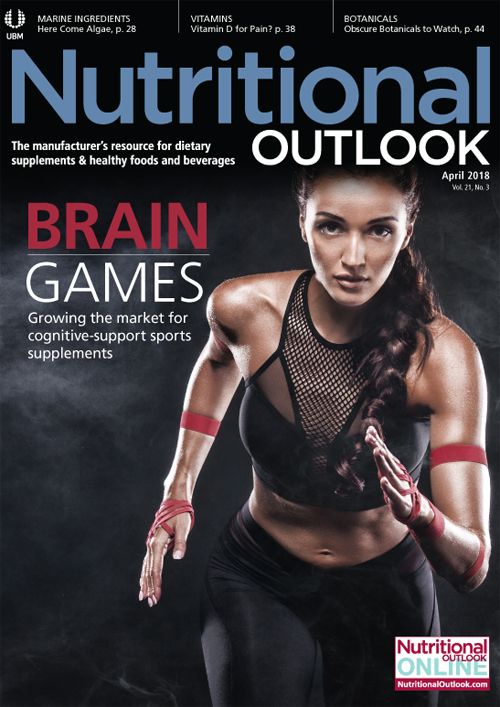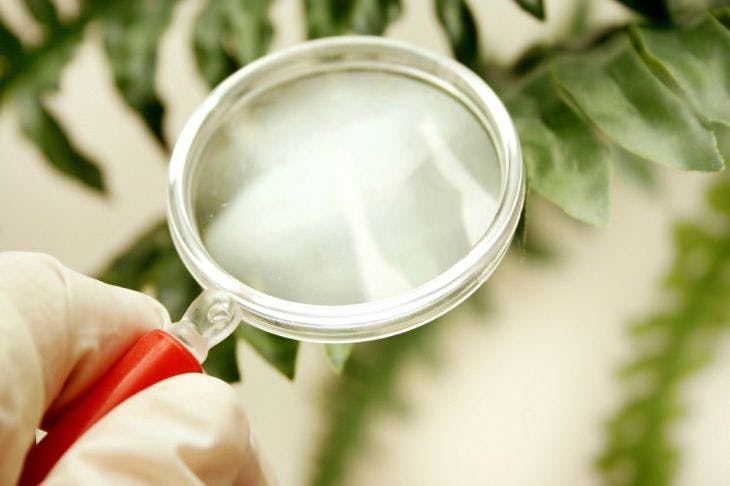What Role Should DNA Barcoding Play in Identifying Botanical Ingredients Today? How Has the Technology Progressed?
Even when DNA barcoding functions in concert with other methods in a comprehensive testing toolbox, it still faces hurdles to optimal utility.
Photo © Shutterstock.com/Sergey Nivens

Roughly three years after now-resigned New York Attorney General Eric T. Schneiderman conducted a sting operation into herbal supplement mislabeling, some in the industry are still suffering flashbacks. From a public-relations standpoint, the episode was hardly a shining moment for industry as headlines across media left the impression that the herbal and botanical products that consumers had come to rely upon were really black boxes packed with adulterants bearing little relation to the active contents stated on labels. While the former attorney general’s investigators built their case on evidence purportedly gathered from DNA testing, the supplement industry mounted a valiant defense, making special effort to explain why the DNA testing most likely employed by those investigators was not fit for purpose-meaning that just because investigators did not see evidence of bilberry DNA in a supplement, for example, that did not necessarily mean that there was no bilberry extract in the formula.
It’s worth noting, as Elan Sudberg, CEO, Alkemist Labs (Costa Mesa, CA), recalls, that “the testing technicalities of the Schneiderman/The New York Times–manufactured controversy were really never on consumers’ radars. The message to them was simplified to ‘These herb companies are cheating you.’” Amazingly, however, for the most part, “consumers continued to trust the brands they already trusted,” he says. And that may be the happiest ending to this narrative that supplement makers could have hoped for.
By this point, the fallout from the investigation has…fallen out, most say. And there’s room to argue that the industry is better off for the scrutiny and the resulting debates over the precise role DNA barcoding should play in authenticating the contents of herbal and botanical products. Arriving at a verdict entails understanding just what DNA barcoding is, and what it does.
Test of Choice
As Jesse Miller, PhD, director of applied research, NSF International, and director of NSF AuthenTechnologies (Ann Arbor, MI), describes it, “DNA barcoding refers to the method of using a short region of a genome to identify an organism.” By comparing that region, or sequence, of genetic material to known reference sequences, the method can ascertain a sample’s origin down to the species level. And while DNA barcoding has longstanding applications in genetic research, paternity and genealogy testing, agriculture, and forensics, it’s also “been used successfully for the identification of animals, plants, fungi, and bacteria,” Miller says.
Indeed, adds Sudberg, when applied to herbs and botanicals, DNA barcoding can identify precise gene segments of a given species in such a way that it “allows increased specificity when identifying closely related species.”
Yet, “DNA barcoding hasn’t always been completely understood or used in the proper situations,” Miller says. “In the New York attorney general’s case, inappropriate test methods were used on highly processed materials, which led to inaccurate results.”
And that’s no small matter. As Qi Jia, PhD, chief scientific officer, Unigen Inc. (Tacoma, WA), explains, DNA barcoding “relies on the existence and integrity of targeted DNA regions in the sample that can be extracted, amplified, and then sequenced.” The rigors of harvesting, processing, formulating, and storage, however, mean that a sample may not preserve those targeted sequences. In addition, the complex medium of a dietary supplement’s finished formulation may also interfere with DNA extraction. All of these obstacles can interfere with the otherwise proper application of DNA testing and can yield false negatives for the plant origin, for instance, or indicate an exaggerated presence of small amounts of irrelevant biomass, like inert filler or minor contaminants with their own intact genomes.
“The DNA method is very sensitive to all contaminants or minor coexists on the plant,” Jia emphasizes, “and caution thus must be taken with final conclusions solely based on a DNA test.” Consider that when his company tested one of its own ingredients, the origin of which was a wild-harvested tree bark, barcoding found not only the correct plant species but DNA fingerprints of at least 24 others-algae, lichen, fungi, moss-all common to tree bark. “To prevent the algae or microbial growth on the bark of a tree in the wild can be a daunting task,” Jia concedes, pointing out that “in the extraction and standardization process to make the extract, those minor contaminants have been removed in washing, extracting, concentrating, and drying.”
Naming of Parts
Another gripe some have with DNA barcoding as applied to botanicals: “No DNA technology is capable of identifying plant parts,” says Miller, be it stem, leaves, seeds, etc. “This is noteworthy,” Miller says, “because certain phytochemicals are only found in specific plant parts.”
It’s also noteworthy because compliance with cGMPs frequently requires identification of the plant part used. “This can be done with other, far better-established techniques and tools of botanical identification with a longer track record of accuracy,” Sudberg says.
He’s talking about tools like plant morphology-both micro- and macro-morphology using industry-standard methods like high-performance thin-layer chromatography (HPTLC) and microscopy. “While DNA barcoding does increase the ability to be more specific for species identification of herbal supplement ingredients,” Sudberg says, “it has inherent limitations that render it inadequate as a standalone test method for regulatory compliance.”
Miller agrees. “This is why we recommend DNA testing to authenticate the species and identify the DNA of other plants that could cause potential safety or quality concerns,” he says. “If appropriate, we then recommend following up with necessary chemical or morphological testing to determine the plant part present.”
Covering All Databases
But even when DNA barcoding functions in concert with other methods in a comprehensive testing toolbox, it still faces hurdles to optimal utility. For one, “A DNA test method is only as good as its DNA sequence database-and not all DNA sequence databases are equal,” says Miller.
The material used to create a reference standard must be validated, for example; fortunately, NSF International maintains a database of validated DNA reference sequences for all relevant botanical ingredients and adulterant species of plants, fungi, and probiotic bacteria. Many of these reference sequences came to the organization as herbarium specimens from its partnerships with leading institutions like Harvard University and the University of California, Berkeley.
And that raises another potential problem with DNA databases: their variable transparency. “As I’ve been saying for years,” Sudberg notes, “there has been and still is a severe lack of transparency in the industry.”
The reasons are understandable. “There’s a lot of work to do to reach the point where DNA testing is as reliable as longer-established methods,” Sudberg concedes. “This needs a lot of funding and collaboration between industry, academic institutions, and public organizations. If the required resources come from the private sector, there’s the tendency to keep findings secret to recoup the investment-yet unless we have transparency, there will always be difficulty duplicating those DNA tests, which sets the stage for huge problems in supply chain and brand relationships.”
Now that FDA is working on a public genome database for plants used in the supplement industry, and The National Institute of Standards and Technology “is sending samples to different labs to understand DNA testing,” Sudberg says, the transparency outlook is “finally changing-slowly-for the better.”
One Piece of the Puzzle
Cosimo Palumbo, marketing director, Indena (Milan, Italy), describes yet another hurdle, particularly as regards testing of plants: the lack of a universal DNA barcoding methodology for them. As a consequence, “the choice of a particular technique is often a compromise that depends on a number of factors. Each plant needs a dedicated method, developed on its own genome,” he says.
“In this respect,” Palumbo continues, “sophisticated DNA sequencing–based tests are powerful technologies, but they’re just one piece of the puzzle, as what really counts is gaining knowledge in plant genetic diversity.”
Miller thinks so, as well. “Combining DNA with other testing methodologies is always the best way to make sure a product is the safest it can be,” he says. “Between DNA, chemical, microscopic, and microbiological testing, a full-service testing suite can provide the information needed to make a decision about a product sample.”
With this in mind, more industry organizations are in fact working to make DNA methods better and more fit-for-purpose for the botanical industry. For example, NSF International and NSF AuthenTechnologies recently launched a verification program combining next-generation sequencing (NGS) technology and NSF’s database of validated DNA reference sequences to accurately identify raw botanical ingredients. “This protocol provides a succinct workflow and testing scheme to verify raw material inputs into the supply chain,” Miller says. “In addition to DNA authentication of the target species, the testing program also screens for contamination, including common adulterants, toxic adulterants, allergens, and fillers.” Verification within the program requires NGS DNA testing of every lot or batch bearing the protocol’s certification mark. Suppliers can then provide certificates and use the certification mark on ingredient shipments.
Indena recently signed a strategic cooperation agreement with London-based biotech company Hyris Ltd. and NHP Research Alliance, based at the University of Guelph, for joint development of DNA authentication test kits for botanicals and related natural health products. The three parties will hold exclusive technological and scientific assets together “to build a reliable third-party verification program that will benefit the natural health products industry,” Palumbo says.
And Unigen is partnering with China’s Institute of Chinese Materia Medica to complete the DNA barcoding of botanicals and marines in the company’s proprietary Phyologix plant collection. Unigen says it will supply samples from up to 8,000 plant species, and the Institute will barcode two DNA regions: ITS2 and trnH-psbA. Because the company’s collection includes botanical taxonomy, it allows for identification not only via DNA sequence comparison, but through traditional botanical micro- and macroscopic exams, as well. “Completion of the project will complement one of the most extensive global DNA barcoding databases for herbal identification,” Jia says, adding that the company will continue to work with the Institute to evaluate select botanical extracts under different conditions to understand the correlation between extraction conditions and integrity preservation of the relevant DNA specimens for barcoding.
As Jia says, “There is no single ‘magic bullet’ that applies to different types of plant-based ingredients and products for identification purposes. Good science will be critical in developing, evaluating, and validating a testing method for its intended use.” But DNA barcoding has real potential, and Jia predicts its acceptance and use will grow thanks to “significant accumulation of DNA sequence data from plants, reductions in equipment costs, and improvements in DNA amplification and sequencing, as well as an increase in the awareness and use of DNA barcoding by industry.” That’s a happy ending to a trying episode that we can all support.
Kimberly J. Decker writes for the food and nutrition industries from her base in the San Francisco area, where she enjoys eating food as much as she does writing about it.
Also read:
DNA Experts Warn Against Misuse of Next-Generation DNA Sequencing in AHPA Article
Next-Generation DNA Testing for Botanicals
DNA Testing Is Valuable, Firm Says, Following Latest Dietary Supplement Controversy


























